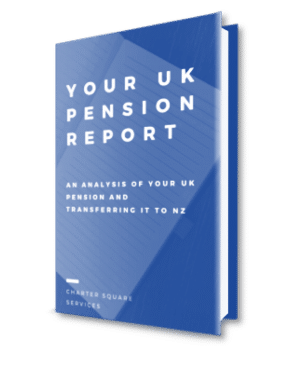New Zealand’s not the only one with traffic lights
In late 2021 the UK Department for Work and Pensions introduced new laws to combat pension scams. This was done through a traffic light system for guiding UK pension providers on pension transfers. This traffic light system introduced new more stringent measures for assessing the risk of a pension transfer and gave UK pension providers new powers to refuse a pension transfer if red flags exist.
First up they introduce the concept of amber flags, which are risks that need to be assessed by the pension providers and if satisfactory answers cannot be provided, they escalate to red flags. The main amber flags are for pension transfers to New Zealand are:
- The member hasn’t shown an employment link or overseas residency
- High-risk or unregulated investments are included in the scheme
- The scheme charges are unclear or high
- The scheme’s investment structure is unclear, complex or unorthodox
The red flags for transfers to New Zealand are:
- The member has failed to provide the required information requested
- Someone carried out a regulated activity without the right regulatory status
- The member requested a transfer after unsolicited contact
- The member has been offered an incentive to make the transfer
- The member has been pressured to make the transfer
Amber Flags and how to avoid them
The above flags has meant that UK pension providers now send out additional questionnaires (often after they have received the transfer documents) asking about the scheme in New Zealand that you intend to transfer to and if you understand it. Also they are now requesting more information on overseas residency of members which is a requirement for any transfer to a QROPS.
The biggest amber flag for every QROPS transfer is the overseas residency requirement
The Pension Regulator has stated that UK scheme must check that the member is resident in the same country that the receiving scheme is based by obtaining a copy of the member’s formal residency documentation and at least two other items of evidence that demonstrate they are resident on the date the transfer application is received. This evidence will vary depending on the country of residence but could include:
- utility bills
- TV subscriptions
- insurance documents relating to their overseas home
- the address registered on their driving licence
- bank account and credit card statements
- evidence of local tax being paid
We are also seeing UK schemes requesting evidence of tax residency in New Zealand. Here there is some overlap with protecting the UK scheme from the overseas transfer charge, we discuss this more later.
Make sure your receiving scheme in New Zealand passes muster
You now need to be careful in deciding your receiving scheme in New Zealand to ensure that the investments in the scheme and fee structures meet the UK requirements. We have seen examples recently where NZ schemes have had:
- High fees (18% in a year because of performance fees) this could be an amber flag
- Investments in crypto currency, futures contracts and other highly leveraged positions – investments which would not necessarily meet the test of retirement appropriate investments
Red Flags and the steps to proactively avoid them
Red flags mean that the statutory right to transfer is removed, and the UK pension providers will reject your pension transfer.
So what are the key risk points in your pension transfer under the Red Flags:
- If you fail to provide the necessary proof of residency information then you will move from an Amber Flag to a Red Flag and the transfer will be stopped.
- If your New Zealand scheme cannot justify high fees or risk profile of the investments this will move from an amber flag to a red flag
- You need to ensure that you do not transfer with any adviser that has ‘cold-called’ you about making a pension transfer
STEP 1: Get the evidence early for the proof of residency
Usually for the proof of address documentation this is required to be addressed mail and from one of the sources described above. The issue is that most correspondence in the 21st century is via email and thus getting documents for proof of address can be onerous. In many instances people are having to go to the bank to get a bank certified statement with their address on it, for example.
Also getting a tax certificate from the New Zealand IRD can be a time-consuming process with many questions and hurdles to jump through. We recommend that people talk with a professional before going down the avenue of requesting these documents.
You additionally need to make sure you get the documents certified correctly. If you don’t they will be rejected and you might miss the time that you have available to meet the requirements (which is typically one month from when the UK provider requests them).
STEP 2: Make sure the NZ scheme you are transferring to has solid investments
Check that the schemes underlying investments meet the requirements to be reasonable retirement assets. The FCA in the UK outlines investments that they consider high risk (https://www.fca.org.uk/consumers/high-return-investments) these include cryptoassets, and foreign exchange products. They also state you should steer away from unregulated investments such as commodities. If there are investments in the scheme that are high risk you may not be able to transfer your pension.
STEP 3: Make sure the NZ scheme has appropriate fees that are fully disclosed
As discussed previously we have seen:
- Fees as high as 18% a year in some New Zealand QROPS
- Schemes that make money off both managing the scheme and managing the investments
You need to fully understand the fees that you could be charged and where these are. The UK pension provider will be looking at these when they review your transfer and if they are uncomfortable with them, or believe that you do not understand the fees – they will red flag the transfer. So you need to be able to articulate fully all the fees that you will be charged. We strongly recommend that you have an adviser help you through this.
STEP 4: Use appropriate professional advisers that have not cold called you
If you are engaged with an adviser that cold-called you, stop working with that adviser immediately. During the transfer you will be required to sign a form stating that you have not been cold-called and you will not be able to do this legitimately if you are dealing with an adviser that has cold called you.
The simple message here is make sure that you are getting appropriate regulated advice at every step of the process.
If you have been red-flagged on a transfer it will make life very difficult to transfer that pension in the future.



